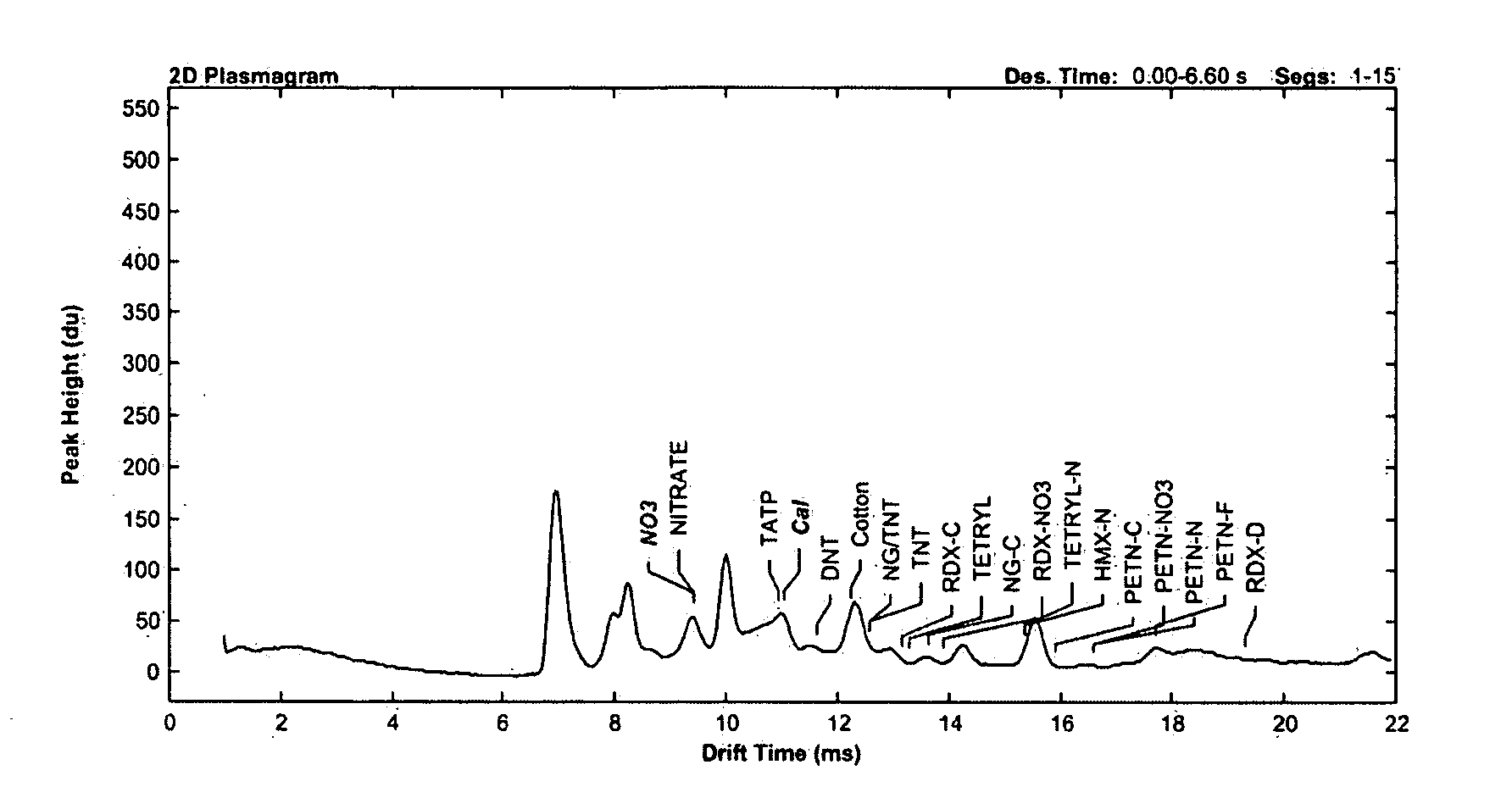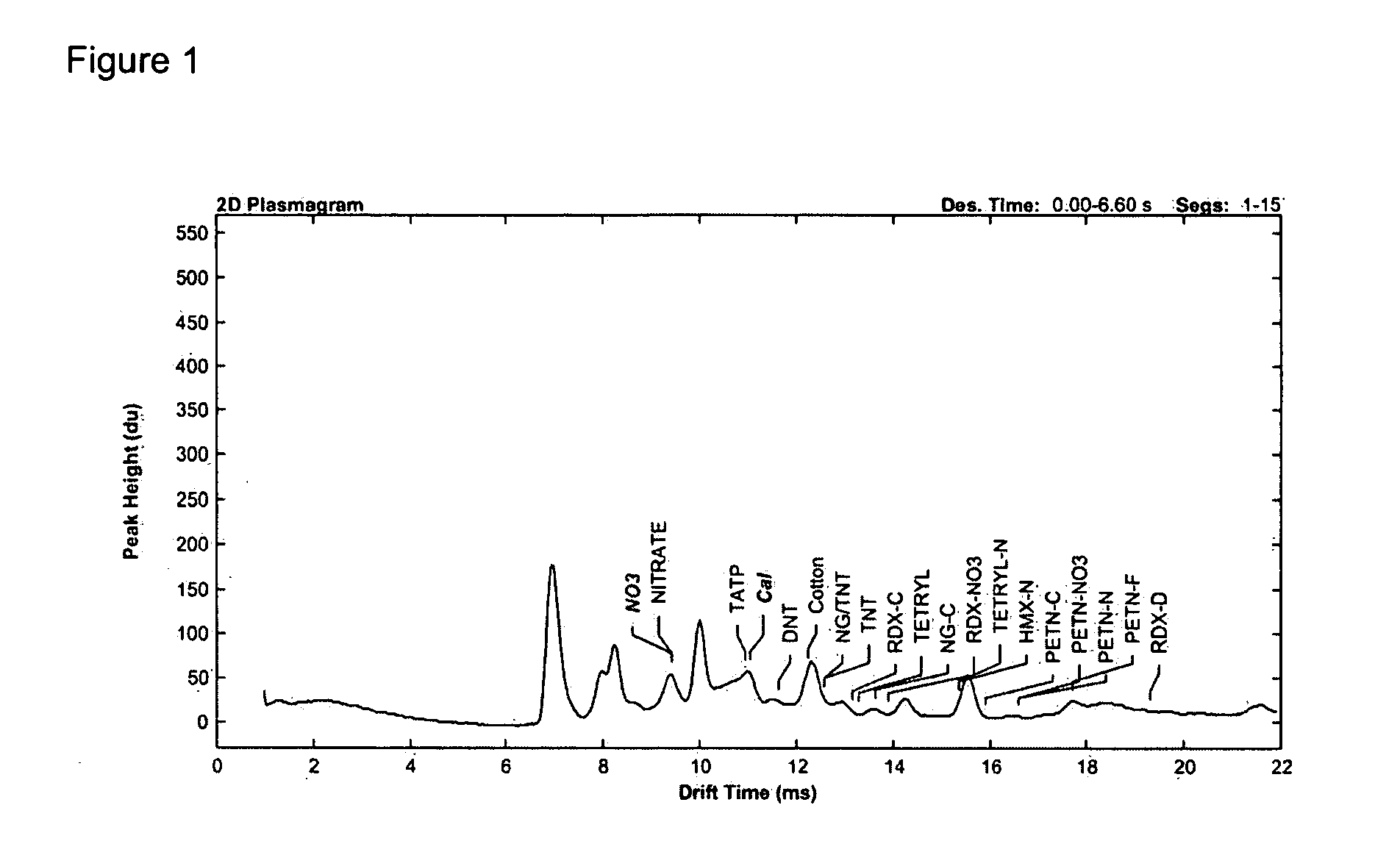Sampling swab
a technology of swab and sample, which is applied in the field of sample sample, can solve the problems of compromising the integrity of analysis, fouling the detection instrument, and failure to detect an analyte,
- Summary
- Abstract
- Description
- Claims
- Application Information
AI Technical Summary
Benefits of technology
Problems solved by technology
Method used
Image
Examples
example 1
Quality Control Evaluation of Sampling Swabs for Explosives Detection
[0086] In this example, sampling swabs are quality control tested for use in explosives detection to ensure that (1) the swabs do not contain any contaminants which interfere with the detection of trace explosive analytes in control samples (purity) and (2) the swabs perform properly using a sample containing known analytes (performance). A clean prepared swab is analyzed in an IONSCAN® 400B ion mobility spectrometer (Smiths Detection) using the following parameters: negative ionization mode, drift tube temperature of 111° C., inlet temperature of 240° C., desorber temperature of 225° C. The ionization reagent is hexachloroethane, the drift gas is cleaned, dried room air at a flow rate of 300 cm3 / min. The scan period is 22 ms with a 0.200 ms shutter gate pulse, 0.025 s analysis delay, 6.600 s analysis duration, 20 co-added scans per segment, and 15 segments per analysis.
[0087]FIG. 1 is an exemplary plasmagram of ...
example 2
Quality Control Evaluation of Sampling Swabs for Narcotics Detection
[0089] In this example, sampling swabs are quality control tested for use in narcotics detection to ensure that (1) the swabs do not contain any contaminants which interfere with the detection of trace explosive analytes in control samples (purity) and (2) the swabs perform properly using a sample containing known analytes (performance). A clean prepared swab is analyzed in an IONSCAN® 400 B ion mobility spectrometer using the following parameters: positive ionization mode, drift tube temperature of 237° C., inlet temperature of 280° C., desorber temperature of 285° C. The ionization reagent is nicotinamide and drift gas is cleaned, dried room air at a flow rate of 300 cm3 / min. The scan period is 20 ms with a 0.200 ms shutter gate pulse, 0.025 s analysis delay, 8.000 s analysis duration, 20 co-added scans per segment, and 20 segments per analysis.
[0090] A swab showing suitable purity for use in narcotics trace det...
PUM
| Property | Measurement | Unit |
|---|---|---|
| thickness | aaaaa | aaaaa |
| pore size | aaaaa | aaaaa |
| bursting strength | aaaaa | aaaaa |
Abstract
Description
Claims
Application Information
 Login to View More
Login to View More - R&D
- Intellectual Property
- Life Sciences
- Materials
- Tech Scout
- Unparalleled Data Quality
- Higher Quality Content
- 60% Fewer Hallucinations
Browse by: Latest US Patents, China's latest patents, Technical Efficacy Thesaurus, Application Domain, Technology Topic, Popular Technical Reports.
© 2025 PatSnap. All rights reserved.Legal|Privacy policy|Modern Slavery Act Transparency Statement|Sitemap|About US| Contact US: help@patsnap.com



